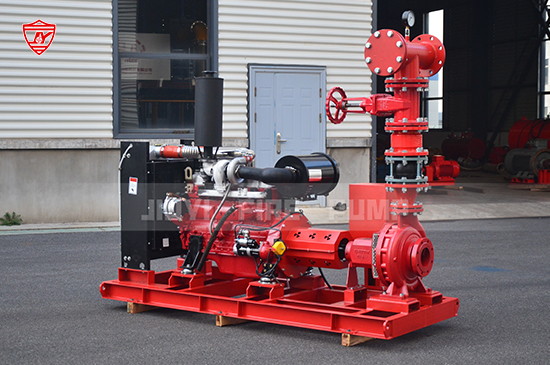Fire pumps are a critical part of any building’s life safety system. In an emergency, their ability to start and perform instantly can mean the difference between disaster and protection. However, reliability doesn’t happen by chance—it requires regular testing, diligent maintenance, and smart system design.
In this article, we’ll cover essential steps to ensure your fire pump works flawlessly when it’s needed most.

The most important factor in ensuring reliability is consistent maintenance. According to NFPA 25, building owners should implement weekly, monthly, and annual inspections, including:
Weekly churn tests (no-flow tests)
Monthly valve inspections
Quarterly alarm signal checks
Annual full flow performance testing
A detailed maintenance log should be kept, documenting all inspections and repairs.
The fire pump must be started and run weekly to ensure it's operational. For electric pumps, this test typically lasts 10 minutes; for diesel pumps, at least 30 minutes (per NFPA 25).
During the test:
Record system pressures
Listen for abnormal noise or vibration
Confirm automatic start functionality
Inspect for fuel, oil, or coolant leaks (diesel pumps)
Regular testing helps identify issues before they become emergencies.
Fire pumps should start automatically in response to low system pressure. This function should be verified during tests. Make sure:
The pressure switches are properly calibrated
The controller is set to auto mode
The backup power system (if applicable) is functional
If automatic start fails, the pump may not operate during an actual fire event.
If your system uses electric fire pumps, a reliable power source is essential. Ensure:
Emergency generators are tested under load
Automatic Transfer Switches (ATS) function correctly
Fuel tanks for generators are full and clean
Loss of power is common during fires and storms—your fire pump must be able to run under all conditions.
Diesel-driven pumps require extra attention to ensure emergency readiness:
Fuel levels and fuel quality must be monitored regularly
Coolant heaters and battery chargers should be inspected
Block heaters must be operational in cold climates
Replace fuel every 12 months to prevent diesel degradation, and keep spare filters and parts on hand.
The pump room environment affects equipment reliability. Make sure:
Room temperature stays between 40°F to 120°F (4°C to 49°C)
Ventilation is adequate to prevent overheating
Humidity is controlled to avoid corrosion
No water leaks or debris are present around electrical systems
Clean, dry, and well-lit rooms support optimal performance and quick troubleshooting.
Operators and maintenance staff must understand:
How to manually start the fire pump
How to respond to alarm signals
How to safely operate pump controllers
Who to contact in case of malfunction
A trained team can prevent small issues from escalating during an emergency.
Controllers are the brain of the fire pump system. Inspect and test:
All indicators and alarms
Start/stop mechanisms
Pressure sensors and timers
If the controller fails, the pump won’t run—even if everything else is in perfect condition.
Fire pump reliability isn't just about the hardware—it’s about how the system is maintained, tested, and managed. With consistent weekly testing, proper controller settings, reliable power backup, and trained personnel, you can ensure your fire pump activates instantly during a real emergency.
Remember, a fire pump that doesn’t start when needed isn’t just a maintenance issue—it’s a life safety risk.